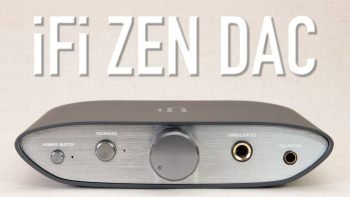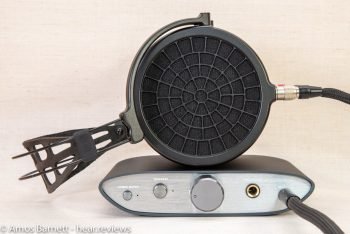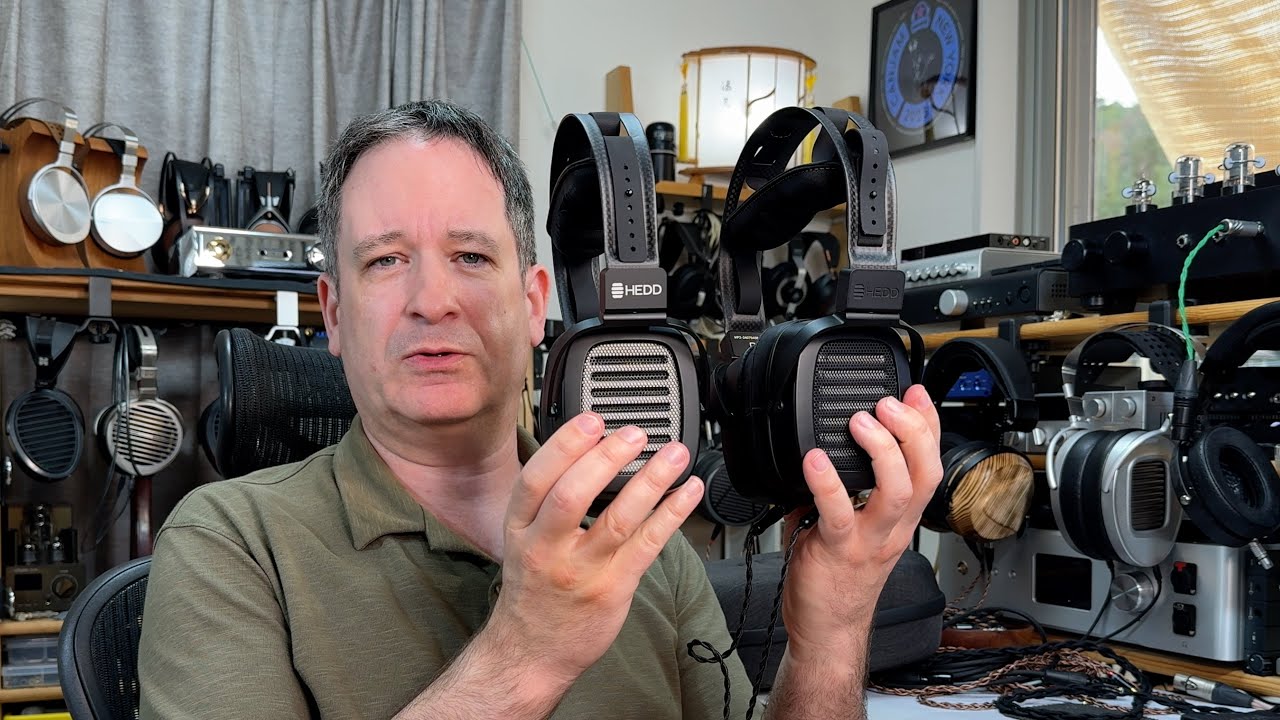At the Tokyo FUJIAAVIC Headphone festival in late 2019, as tends to happen throughout the two days, I ran into the owner of FUJIYAAVIC in the iFi room just after he had tried the Zen DAC. He mentioned that it sounded pretty good. As recent curiosity had had me review a number of sub-$500 components, and I’d had good experiences with iFi products, I contacted them and asked if I could review one.

The DAC itself is slightly wider than one of Schiit Audio’s smallest components, primarily the result of the fancy case. Buttons on the left and headphone sockets on the right form a symmetric pattern on the front panel, which is sloped slightly back. iFi has chosen more creative names for their features — “Power Match” for the gain control and “Truebass” for the bass boost.

For the headphone outputs, the unbalanced one is a standard 6.3mm (1/4”) jack, and the balanced the new 4.4mm Pentaconn. The latter will hopefully become the standard, for balanced at least, in the future. The volume control is a standard potentiometer. On the back, a pair of RCA sockets allow either DAC or pre-amp connectivity, selectable via a switch. A 4.4mm socket is also available for the same purpose as a balanced output, but given how uncommon a 4.4mm to XLR cable is, it’s not particularly helpful.
No doubt helping keep the cost down is that the Zen DAC is USB powered. Uniquely, a USB 3 jack is used on the rear, I gather since USB 3 cables have better noise isolation. One such USB A to B cable is provided. The unique features continue with support for very high-res input of up to both 384 kHz PCM and DSD256 (DSD128 if you own a Mac). MQA is also supported.
At its $130 price point, the features are, in my opinion, considerable overkill. The price is offset, at least for the average consumer, by having to buy an aftermarket cable for one’s headphones to get the most out of the Zen DAC. High-res music, likewise, cannot benefit something this far down in price.

That being said, performance was pleasant to say the least. Unlike some more “digital-sounding” DACs out there, the Zen DAC gave a pleasant rendition of everything I put through it while connected to one of my Macs. Where connection to a device, such as a smart phone, that cannot power the Zen DAC is required, a separate 5V power socket is available for that purpose. Experimentally, I tried comparing it using a 5V linear power supply, but it didn’t seem to improve in performance. Likewise if I powered it through iFi’s own iUSB 3.0 instead of direct from my computer.
With the Drop Sennheiser HD6XX headphones out of the balanced port, the soundstage was somewhat narrow, pushing the already mid-focussed sound with these headphones forward. It was pleasant to listen with, but a far cry from what these headphones are capable of. Connecting the Zen DAC via RCA to a Schiit Magni 3+, the soundstage opened up and the bass became stronger, no doubt a result of the larger amount of power and subsequently more powerful amp.

It was a similar story with other headphones such as the Drop AKG K7XX and HiFiMan Sundara, though less so with the Campfire Audio Cascade, the result of them already having a strong bass output. The limited power of the amp, a result of being USB bus-powered were some countered by the Truebass boost function, which filled in the lower end a bit more.
Ultimately, the Zen DAC is a pretty neat, simple and decent-sounding DAC/amp. While I think at this price point a balanced headphone output is unnecessary, and that a more powerful single-ended output would have been more sensible, performance was sufficient all-round to make it a nice unit for people who want something simple for casual listening to put on their desk, or a basic DAC and pre-amp for something like powered speakers.
The iFi Zen DAC can be purchased online from Amazon though this link, which also helps support this site.











